I am trying to determine if an image captured from the camera is iOS is blurry or not. I already check the camera focus before taking the picture, but this seems different that if the image is blurry.
I got this working on Android using Open CV, OpenCV with Laplacian formula to detect image is blur or not in Android
This ends up with,
int soglia = -6118750;
if (maxLap <= soglia) { // blurry
I played with this a bit and decreased to -6718750.
For iOS there seems to be less information on doing this. I saw a couple posts of people trying to use Open CV on iOS for this, but they did not seem successful.
I saw this post using Metal on iOS to do this, https://medium.com/better-programming/blur-detection-via-metal-on-ios-16dd02cb1558
This was in Swift, so I manually converted it line by line to Objective C. I think may code is a correct translation, but not sure if the original code is correct or will work in general on camera captured images?
Basic in my testing it always gives me a result of 2, both for average and variance, how can this be used to detect a blurry image, or any other ideas?
- (BOOL) detectBlur: (CGImageRef)image {
NSLog(@"detectBlur: %@", image);
// Initialize MTL
device = MTLCreateSystemDefaultDevice();
queue = [device newCommandQueue];
// Create a command buffer for the transformation pipeline
id <MTLCommandBuffer> commandBuffer = [queue commandBuffer];
// These are the two built-in shaders we will use
MPSImageLaplacian* laplacian = [[MPSImageLaplacian alloc] initWithDevice: device];
MPSImageStatisticsMeanAndVariance* meanAndVariance = [[MPSImageStatisticsMeanAndVariance alloc] initWithDevice: device];
// Load the captured pixel buffer as a texture
MTKTextureLoader* textureLoader = [[MTKTextureLoader alloc] initWithDevice: device];
id <MTLTexture> sourceTexture = [textureLoader newTextureWithCGImage: image options: nil error: nil];
// Create the destination texture for the laplacian transformation
MTLTextureDescriptor* lapDesc = [MTLTextureDescriptor texture2DDescriptorWithPixelFormat: sourceTexture.pixelFormat width: sourceTexture.width height: sourceTexture.height mipmapped: false];
lapDesc.usage = MTLTextureUsageShaderWrite | MTLTextureUsageShaderRead;
id <MTLTexture> lapTex = [device newTextureWithDescriptor: lapDesc];
// Encode this as the first transformation to perform
[laplacian encodeToCommandBuffer: commandBuffer sourceTexture: sourceTexture destinationTexture: lapTex];
// Create the destination texture for storing the variance.
MTLTextureDescriptor* varianceTextureDescriptor = [MTLTextureDescriptor texture2DDescriptorWithPixelFormat: sourceTexture.pixelFormat width: 2 height: 1 mipmapped: false];
varianceTextureDescriptor.usage = MTLTextureUsageShaderWrite | MTLTextureUsageShaderRead;
id <MTLTexture> varianceTexture = [device newTextureWithDescriptor: varianceTextureDescriptor];
// Encode this as the second transformation
[meanAndVariance encodeToCommandBuffer: commandBuffer sourceTexture: lapTex destinationTexture: varianceTexture];
// Run the command buffer on the GPU and wait for the results
[commandBuffer commit];
[commandBuffer waitUntilCompleted];
// The output will be just 2 pixels, one with the mean, the other the variance.
NSMutableData* result = [NSMutableData dataWithLength: 2];
void* resultBytes = result.mutableBytes;
//var result = [Int8](repeatElement(0, count: 2));
MTLRegion region = MTLRegionMake2D(0, 0, 2, 1);
const char* bytes = resultBytes;
NSLog(@"***resultBytes: %d", bytes[0]);
NSLog(@"***resultBytes: %d", bytes[1]);
[varianceTexture getBytes: resultBytes bytesPerRow: 1 * 2 * 4 fromRegion: region mipmapLevel: 0];
NSLog(@"resultBytes: %d", bytes[0]);
NSLog(@"resultBytes: %d", bytes[1]);
int variance = (int)bytes[1];
return variance < 2;
}

